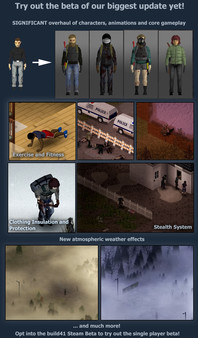
EXISTENSIS WINDOWS 7
# define name of installer OutFile "installer.exe" # define installation directory InstallDir $DESKTOP # For removing Start Menu shortcut in Windows 7 RequestExecutionLevel user This installer will do the following: create an installer named "installer.exe" an uninstaller on the desktop a shortcut in the start menu that points to the uninstaller. # Name the installer OutFile "installer.exe" # default section Section # create a shortcut named "new shortcut" in the start menu programs directory # presently, the new shortcut doesn't call anything (the second field is blank) CreateShortcut "$SMPROGRAMS\new shortcut.lnk" "" # to delete shortcut, go to start menu directory and manually delete it # default sec end SectionEnd Simple installer and uninstaller with start menu item This installer creates a start menu item, nothing more # Delete the directory RMDir $INSTDIR SectionEnd Simply create a start menu item

# Delete the uninstaller Delete $INSTDIR\uninstaller.exe # the section will always be named "Uninstall" Section "Uninstall" # Delete installed file Delete $INSTDIR\test.txt #- # default section end SectionEnd # create a section to define what the uninstaller does. # define uninstaller name WriteUninstaller $INSTDIR\uninstaller.exe
EXISTENSIS INSTALL
# define installer name OutFile "installer.exe" # set desktop as install directory InstallDir $DESKTOP # default section start Section # define output path SetOutPath $INSTDIR # specify file to go in output path File test.txt The uninstaller will remove itself and the installed text file. This script will do the following: create an installer named "installer.exe" install a file named "test.txt" to the desktop create an uninstaller named "uninstaller.exe" on the desktop. SectionEnd Install a file and create an uninstaller to remove it # define the name of the installer Outfile "simple installer.exe" # define the directory to install to, the desktop in this case as specified # by the predefined $DESKTOP variable InstallDir $DESKTOP # default section Section # define the output path for this file SetOutPath $INSTDIR # define what to install and place it in the output path File test.txt Running the simple installer installs the test.txt file to the Desktop. If the installer script is on the Desktop, delete the test.txt file before running the compiled installer. This installer script will copy the file "test.txt" to the installation directory.įirst, create the test.txt file in the same directory as the installer script below then compile the installer script. MessageBox MB_OK "Hello_world.txt has been created successfully at Desktop!" # end the section SectionEnd Simply install a file # write the string "hello world!" to the output file FileWrite $0 "hello world!" # close the file FileClose $0 # Show Success message. This file does not need to existīefore script is compiled and run */ FileOpen $0 "$DESKTOP\Hello_world.txt" w # declare name of installer file Outfile "hello world.exe" # open section Section # create a popup box, with an OK button and some text MessageBox MB_OK "Now We are Creating Hello_world.txt at Desktop!" /* open an output file called "Hello_world.txt", This hello world script will write "hello world" to a text file when the installer is run Section # create a popup box, with an OK button and the text "Hello world!" MessageBox MB_OK "Hello world!" SectionEnd Simple hello world - writing text to a file # set the name of the installer Outfile "hello world.exe" # create a default section. This hello world script will create a popup box with the words "hello world" in it and an "OK" button, when the installer is run Section # default section end SectionEnd Simple hello world - popup box The bare minimum # name the installer OutFile "Installer.exe" # default section start every NSIS script has at least one section. nsi extension, and load the file into the makensisw compiler.

Once you have installed NSIS, to create an installer, copy a script into a text editor, save the file with a. It has a graphical front end that explains three ways to load scripts, so it's very easy to use. The makensisw.exe in the NSIS installation folder is the actual compiler.

You can use the NSIS Menu and under the Compiler section click Compile NSI scripts to start MakeNSISW.

If this page is your first experience of NSIS, you will need the NSIS compiler to transform the following scripts, and any others you create, into functioning installers. 9 Simply get current version of Java Runtime Environment.8 Simple installer and uninstaller with start menu item.6 Install a file and create an uninstaller to remove it.4 Simple hello world - writing text to a file.


 0 kommentar(er)
0 kommentar(er)
